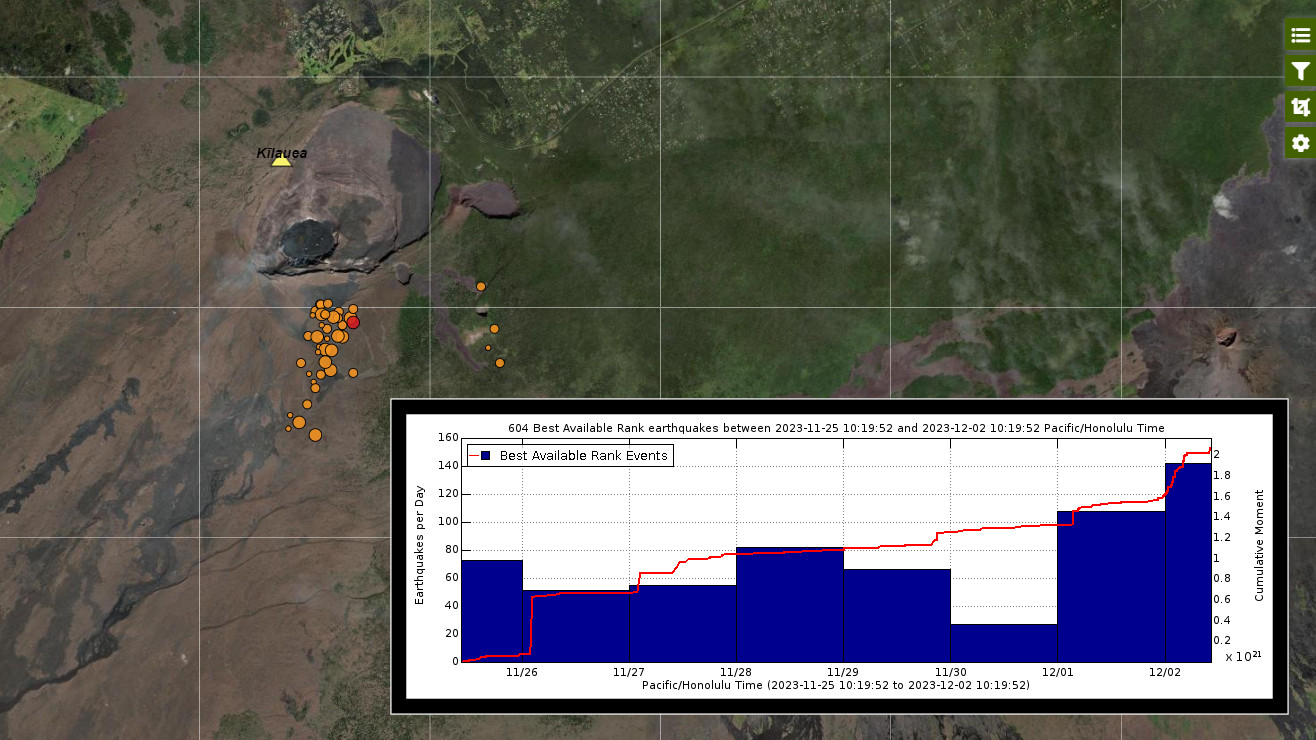(BIVN) – Kīlauea is not erupting and remains at an alert level of ADVISORY, while an uptick in volcanic unrest was observed at the Hawaiʻi island volcano overnight.
Scientists say seismicity increased dramatically in the south caldera region just before midnight. As of 5 a.m. on Saturday morning (December 2) the seismicity had returned to lower levels.
“While the volcano tectonic earthquakes have subsided pulses of small, long period earthquakes that cannot be accurately located are occurring beneath Halemaʻumaʻu indicating that unrest continues,” the USGS Hawaiian Volcano Observatory wrote on Saturday morning.
Low levels of seismicity continue in the upper East Rift Zone (32 events over the past 24 hours) and in the Southwest Rift Zone (18 events over the past 24 hours). No unusual activity has been noted along the middle and lower sections of Kīlauea’s East Rift Zone.
From the USGS Hawaiian Volcano Observatory update posted on December 2:
Summit Observations: Summit seismicity was elevated over the past 24 hours, with a strong seismic swarm in the south caldera that produced about 90 earthquakes from just before midnight to just after 5 a.m. HST. Minor small earthquakes also occurred in the upper East Rift Zone during this period. Activity this morning has subsided, but bursts of long period activity that cannot be located accurately continue beneath Halemʻaumaʻu. These earthquakes are indicative of continued magmatic unrest.
The seismic swarm in the south caldera was accompanied by strong uplift on the Sand Hill tiltmeter located in that region. Tilt flattened at the Sand Hill tiltmeter just before 5 a.m. and earthquakes began diminishing soon after that. The Uēkahuna summit tiltmeter, located northwest of the caldera, showed mixed signals over the past 24 hours, with the NE component increasing 0.5 microradians and the NW component decreasing 1 microradian. Overall, the summit of Kīlauea remains at a high level of inflation, above the level reached prior to the most recent eruption in September 2023, and the highest level since the 2018 eruption.
Sulfur dioxide (SO2) emission rates remain low. Field observations found SO2 gas emission of 100 tonnes per day on November 17. This is the same as an observation in October 2023.
There is currently no sign of an imminent eruption, but the summit region remains unsettled with increased unrest continuing as long period earthquakes beneath Halemaʻumaʻu are continuing in pulses. Seismic activity continues at low levels at the summit, upper East Rift Zone, and Southwest Rift Zone after the early morning swarm. The onsets of previous summit eruptions have been marked by strong swarms of earthquakes caused by the emplacement of a dike 1-2 hours before eruptions and these have not been detected at this time.
Aside from the closure of the Mauna Iki Trail and the Kaʻū Desert Trail in the Southwest Rift Zone, there are no additional closures within Hawaiʻi Volcanoes National Park relative to the current volcanic unrest.


by Big Island Video News10:44 am
on at
STORY SUMMARY
HAWAIʻI VOLCANOES NATIONAL PARK - Scientists say pulses of small, long period earthquakes that cannot be accurately located are now occurring beneath Halemaʻumaʻu.